By: Raelyn Reinardy, Content Writer | Published: January 11, 2024
____________________________________________________________________________________________
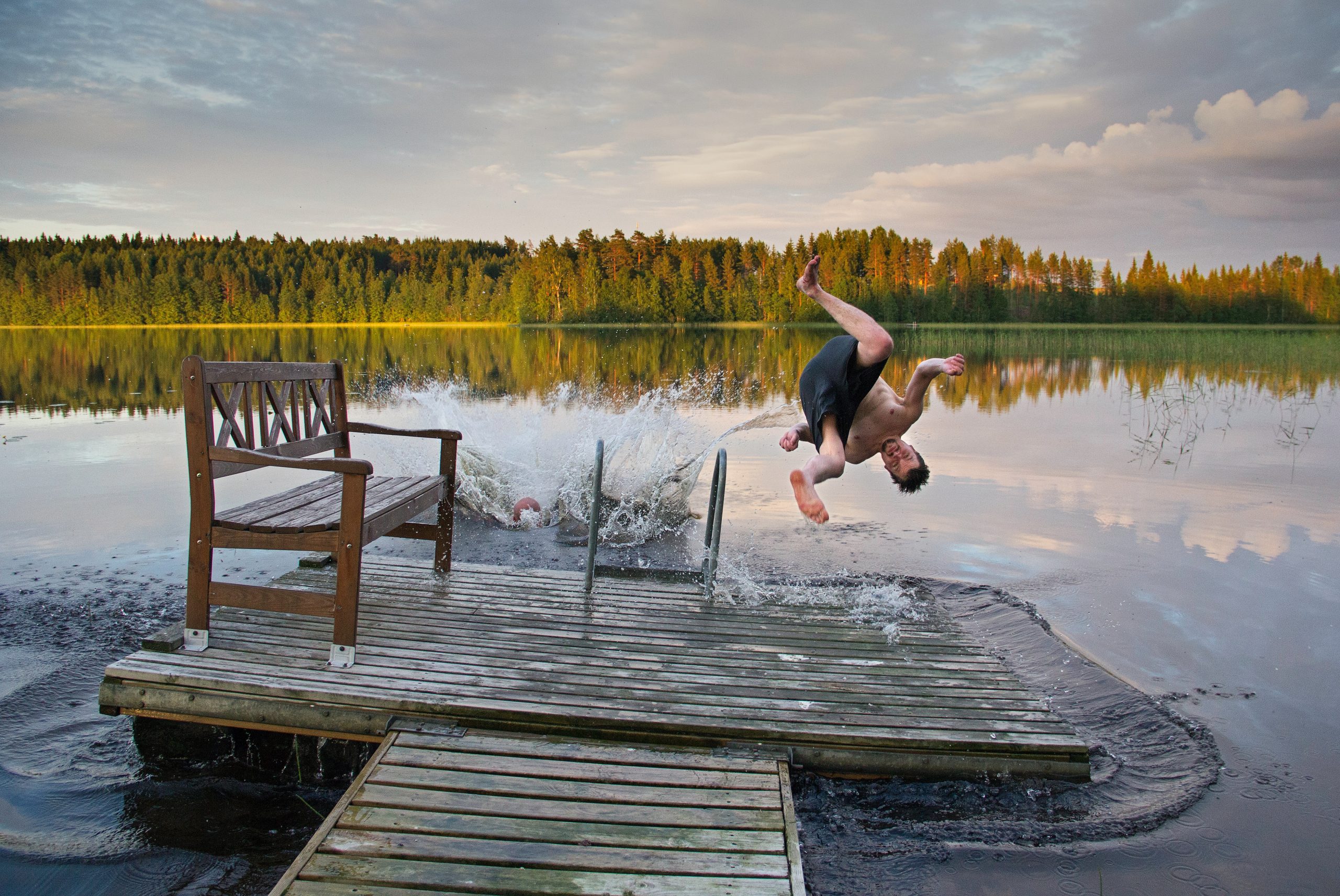
There is nothing better than starting off your fun-filled weekend at the lake with family and friends like an old-fashioned cannon ball contest to see who can make the biggest splash. You’re up first and everyone is at the shoreline cheering as you run full speed toward the open water. After take-off, you tuck your knees to your chest and crash against the water’s surface. Eager to see everyone’s faces, you push your foot off the bottom and…. Ew! Gross! That slimy texture you may be feeling between your toes is called muck. This article will explain what muck is and how it accumulates along with ways to address existing muck and prevent it from accruing.
What is Muck?
Muck is the buildup of organic material such as leaves, grass clippings, fish waste, etc., in your pond, mixed with inorganic material like sand, clay, or silt. When these organic materials settle at the bottom of a pond or lake, they begin to decompose. This process requires oxygen which, in this case, is pulled from the water. So, if a large amount of organic material is present, the body of water eventually runs out of oxygen to help these materials deteriorate. This causes a growing layer of the sludgy substance called muck.
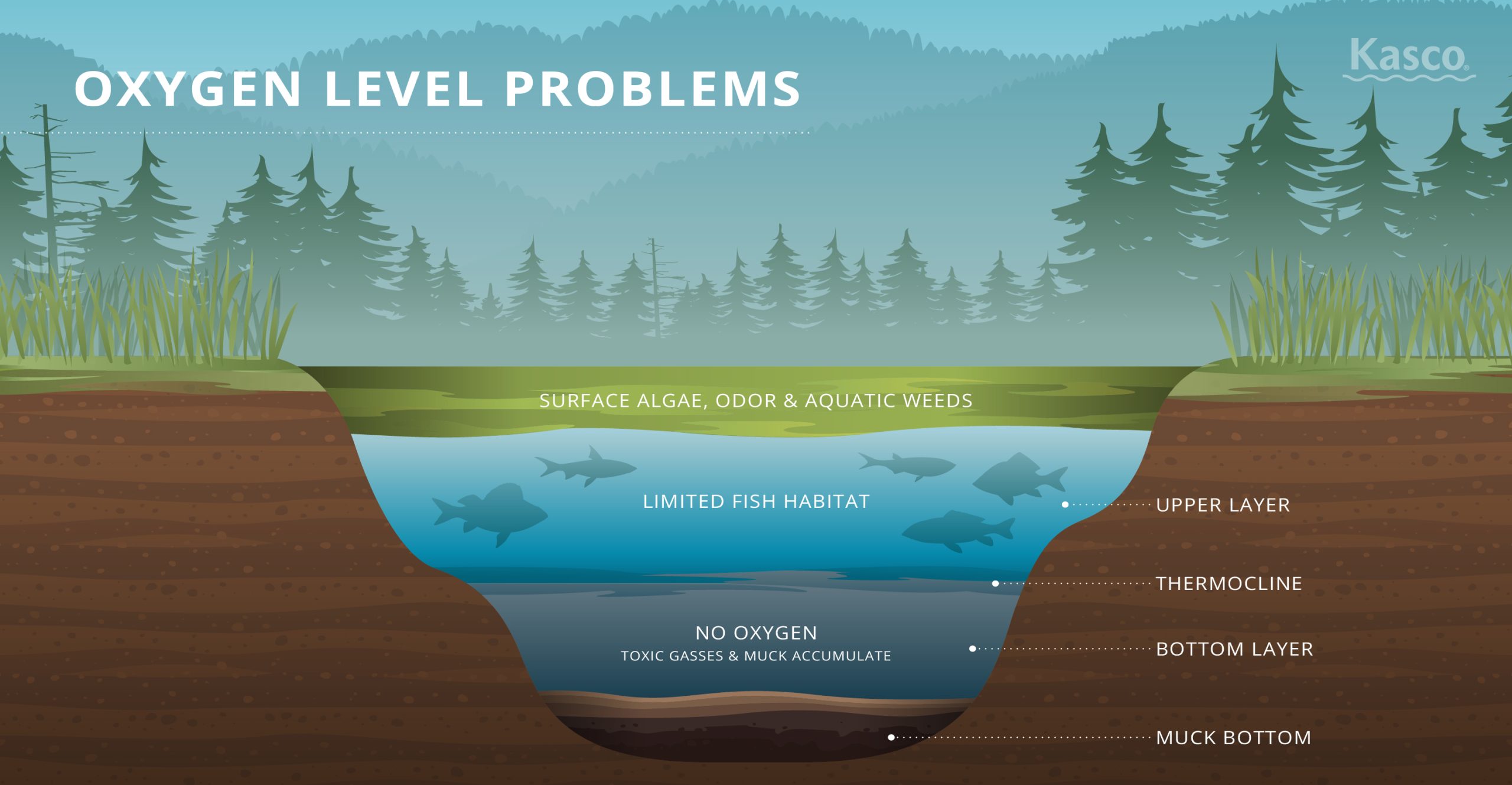
While you may be realizing your waterfront has fallen victim to muck, there are ways to combat it. Luckily, underneath the slimy substance is the original sand. The best way to get your pond or lake bottom back to normal is by adding oxygen to help the decomposition process along.
Manage Muck with AquatiClear™ by Kasco
Moving water is the most efficient approach to introduce oxygen to a body of water. This can be done using a Kasco AquatiClear Circulator. Featuring a clog-resistant design, AquatiClear units create a steady flow of water movement that increases the dissolved oxygen in stagnant areas around the pond or lake. It also addresses the floating debris on the water’s surface to prevent organic materials from settling on the bottom and adding to the growing layer of muck. The crown-like prop guard allows any floating materials to slip by instead of collecting around the unit. This means continuous operation and less maintenance.
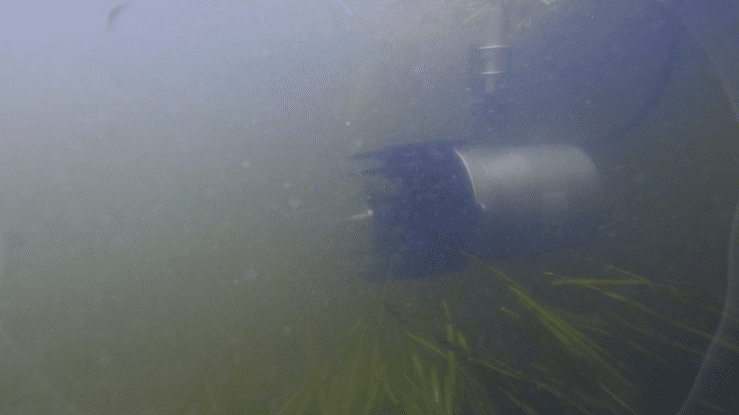
Mounting Options and Positioning Tips
Kasco also offers a variety of mounting options to best position AquatiClear units for optimal water flow. Choose between a Universal Dock Mount, which attaches to a dock or similar structures, or a Horizontal Float Mount, which suspends the unit just below the water’s surface. Both options allow you to direct the flow of water to a desired area. However, it is important to take into account the angle in which you position your unit. While you may think angling the unit toward the bottom is the fastest way to address muck, it simply moves the problem rather than makes it go away. Additionally, moving the bottom sediment can be considered dredging which is illegal in some states.
To avoid dredging any areas, AquatiClear Circulators should be positioned horizontally or at a slight upward angle. They should also be an appropriate distance from the bottom depending on the size of your unit. 1/2HP units should be placed at least 1 ft. above the bottom whereas 3/4HP and 1HP units should be placed at least 2 ft. above it. If accommodating to this distance puts your AquatiClear Circulator less than 1.5 ft. below the surface, a Shallow Water Install Kit is recommended to avoid a loud whirlpool noise.
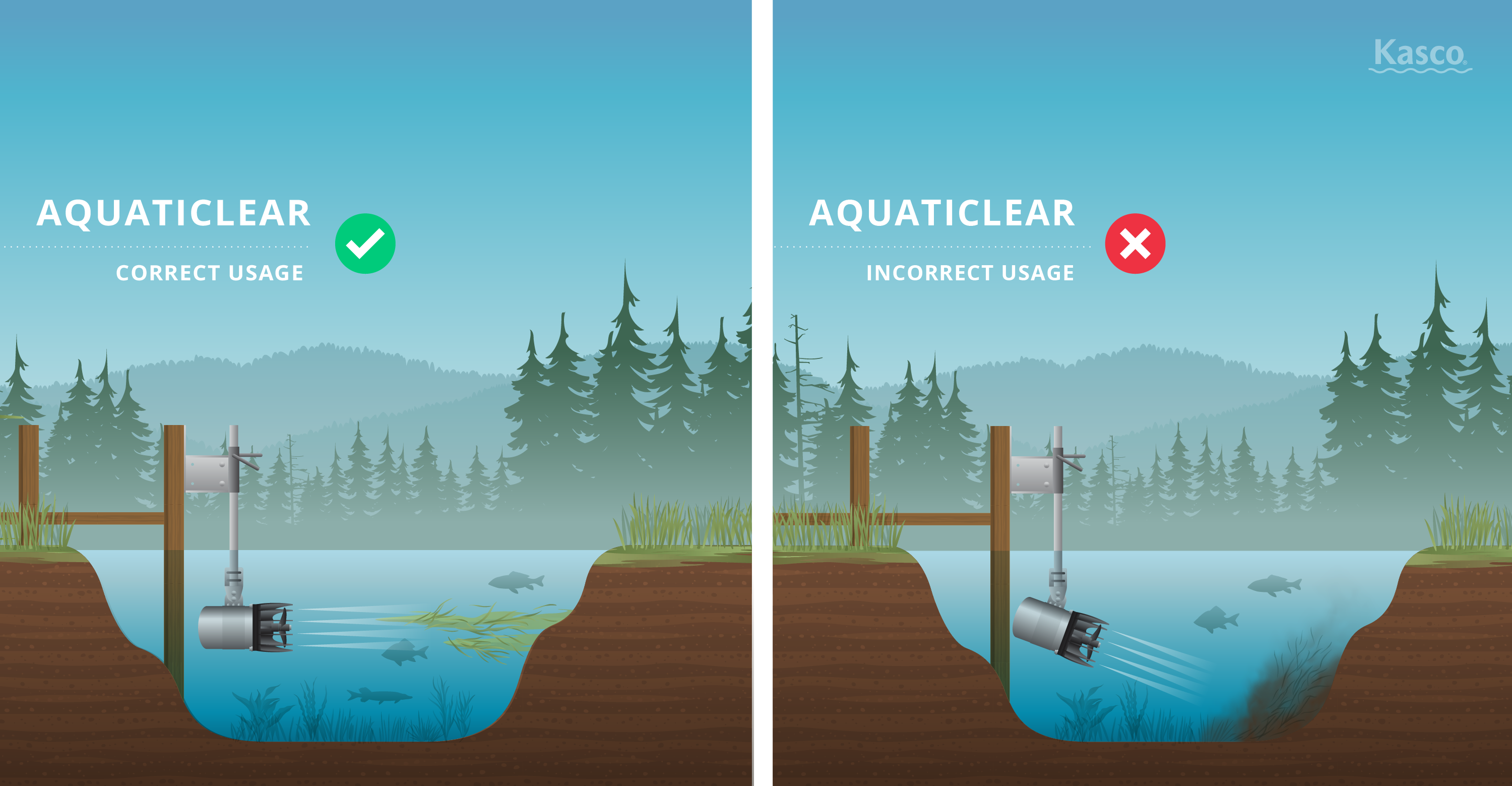
Adding Beneficial Bacteria
Although AquatiClear Circulators do increase oxygen levels, they are typically used as more of a preventive measure. If muck is already present on your pond or lake bottom, Kasco recommends pairing AquatiClear with Pond Probiotics, our beneficial bacteria product line. Pond Probiotics are a safe, non-chemical treatment that organically digests muck and sludge. This formula is used to produce a healthy, balanced eco-system with its highly concentrated, unique blend of naturally occurring bacteria and enzymes.
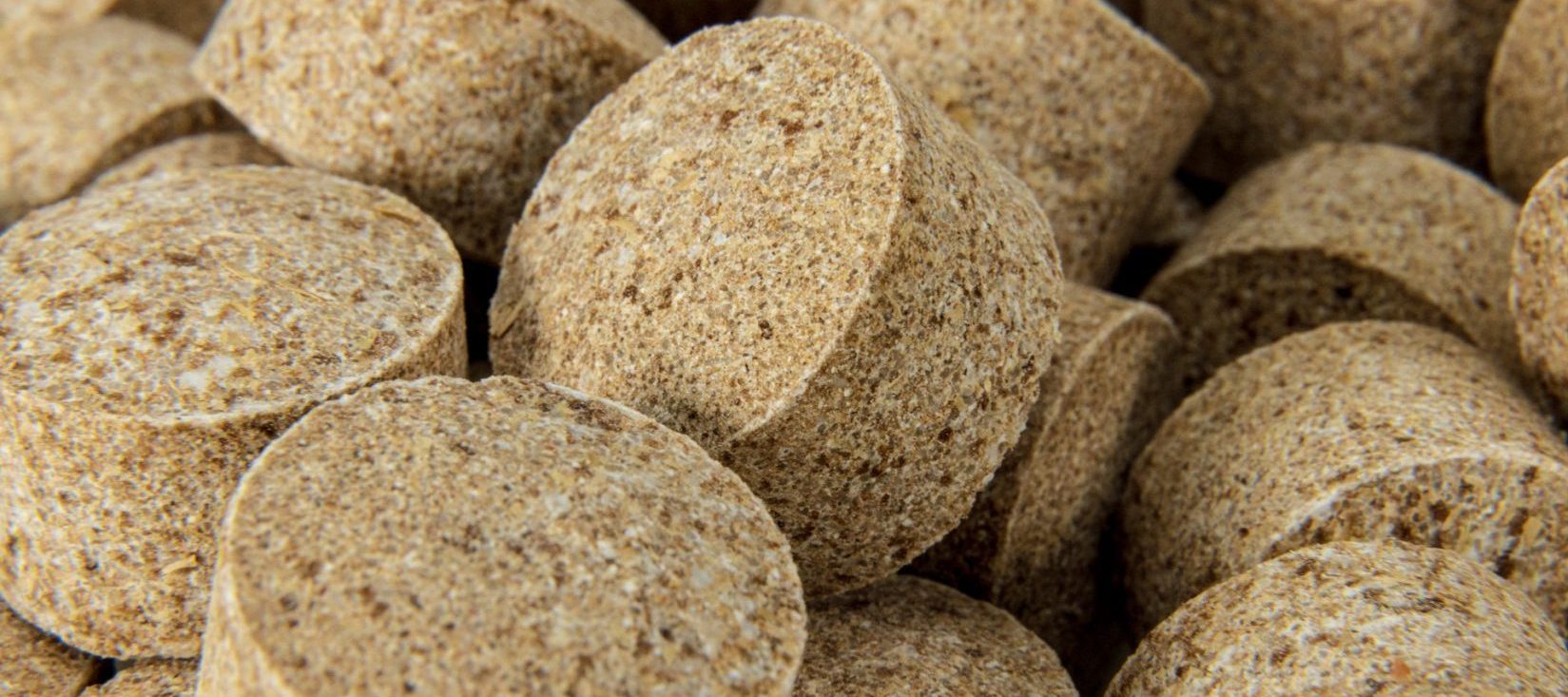
Overall, the most effective way to remedy existing muck is by using a device that can efficiently introduce oxygen to the water, such as AquatiClear, in addition to applying doses of beneficial bacteria. Once the muck is gone, running just the circulator should be sufficient to prevent any muck from accumulating. A larger pond or lake may also benefit from applying a series of these products around the whole shoreline as it can greatly improve the water quality of the entire waterbody. Following these steps will ensure clear shorelines once again. Now, turn off and unplug your AquatiClear Circulator to safely resume your cannon ball contest.
Click here to learn more about AquatiClear and how it can help keep your shoreline clean.
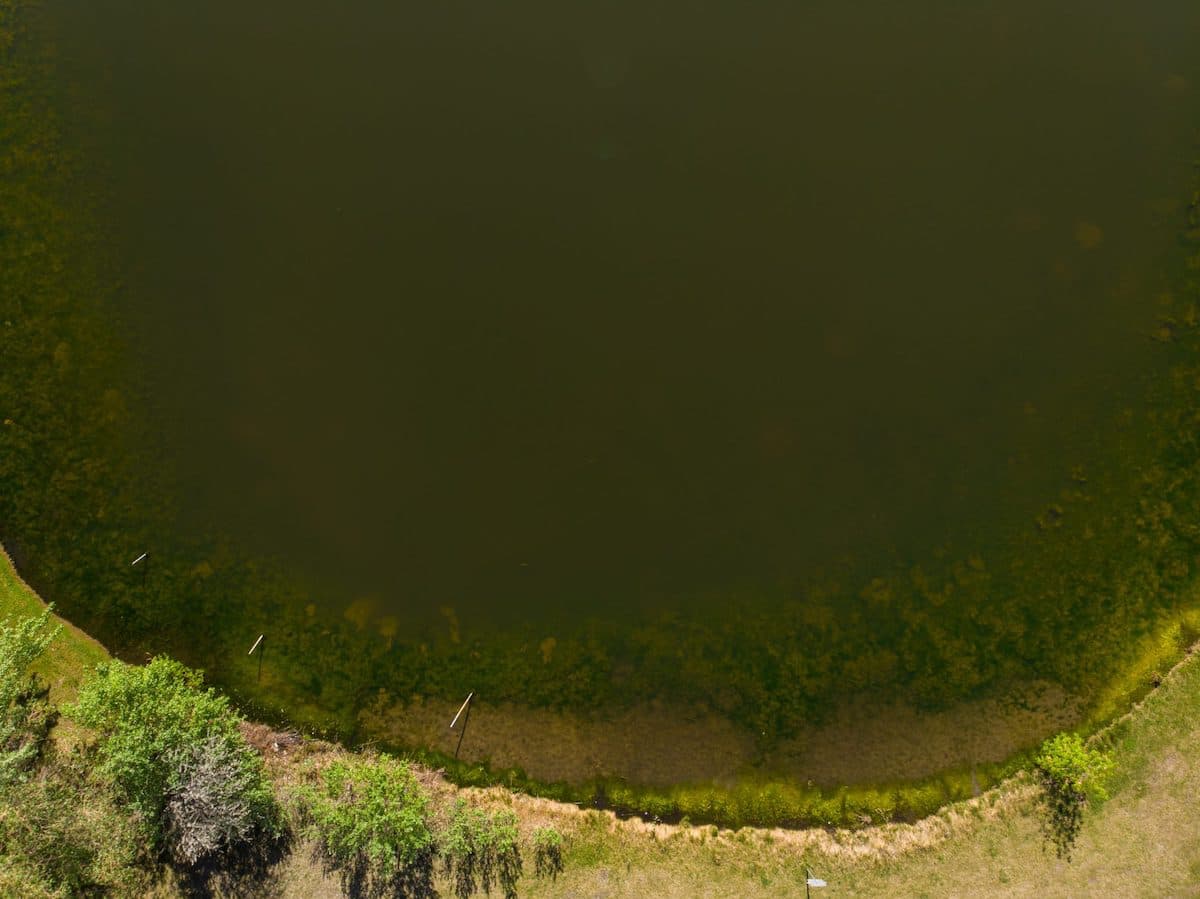 The Practical Guide on Pond Sludge
The Practical Guide on Pond Sludge
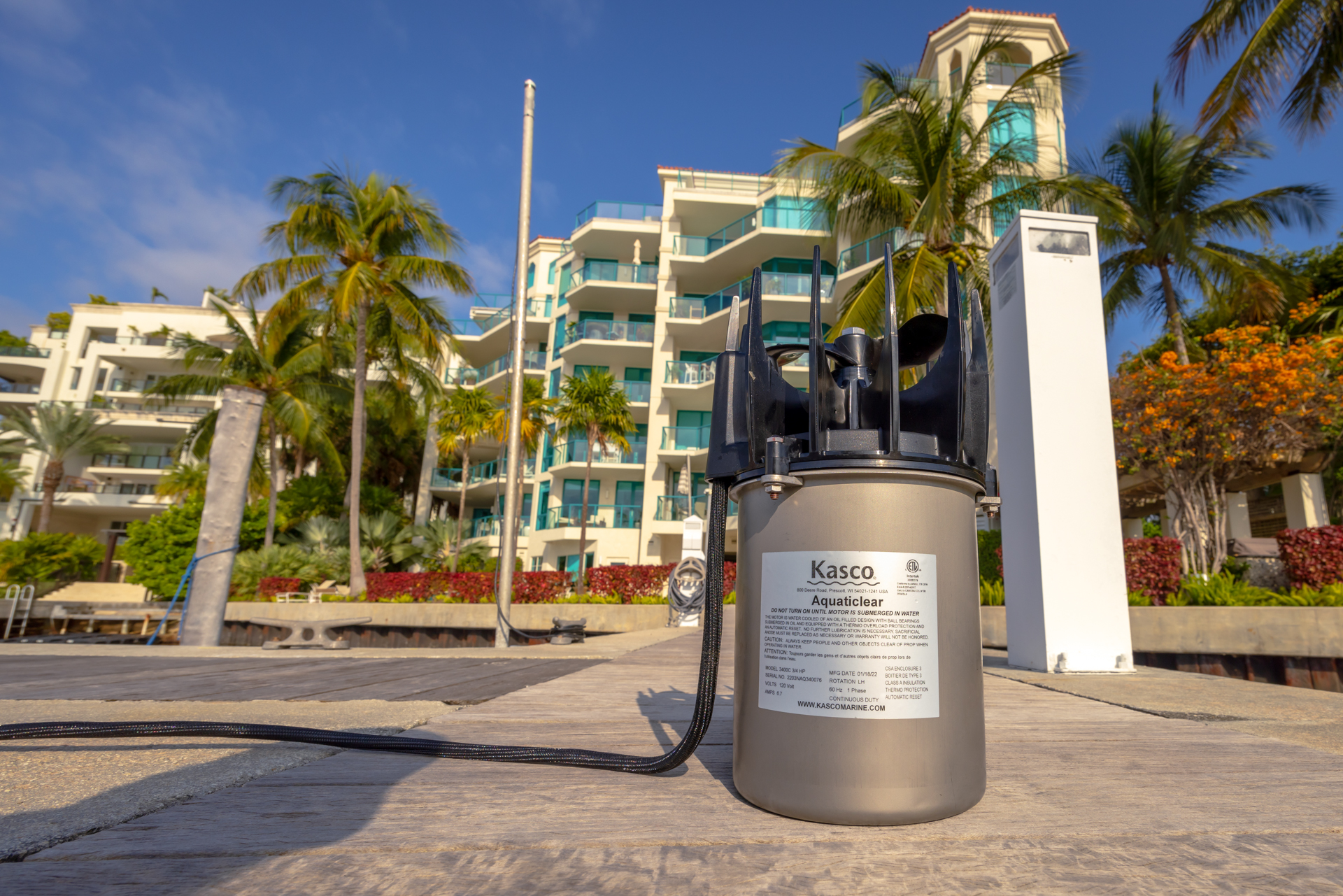 AquatiClear Mounting Options & Installation Tips
AquatiClear Mounting Options & Installation Tips
